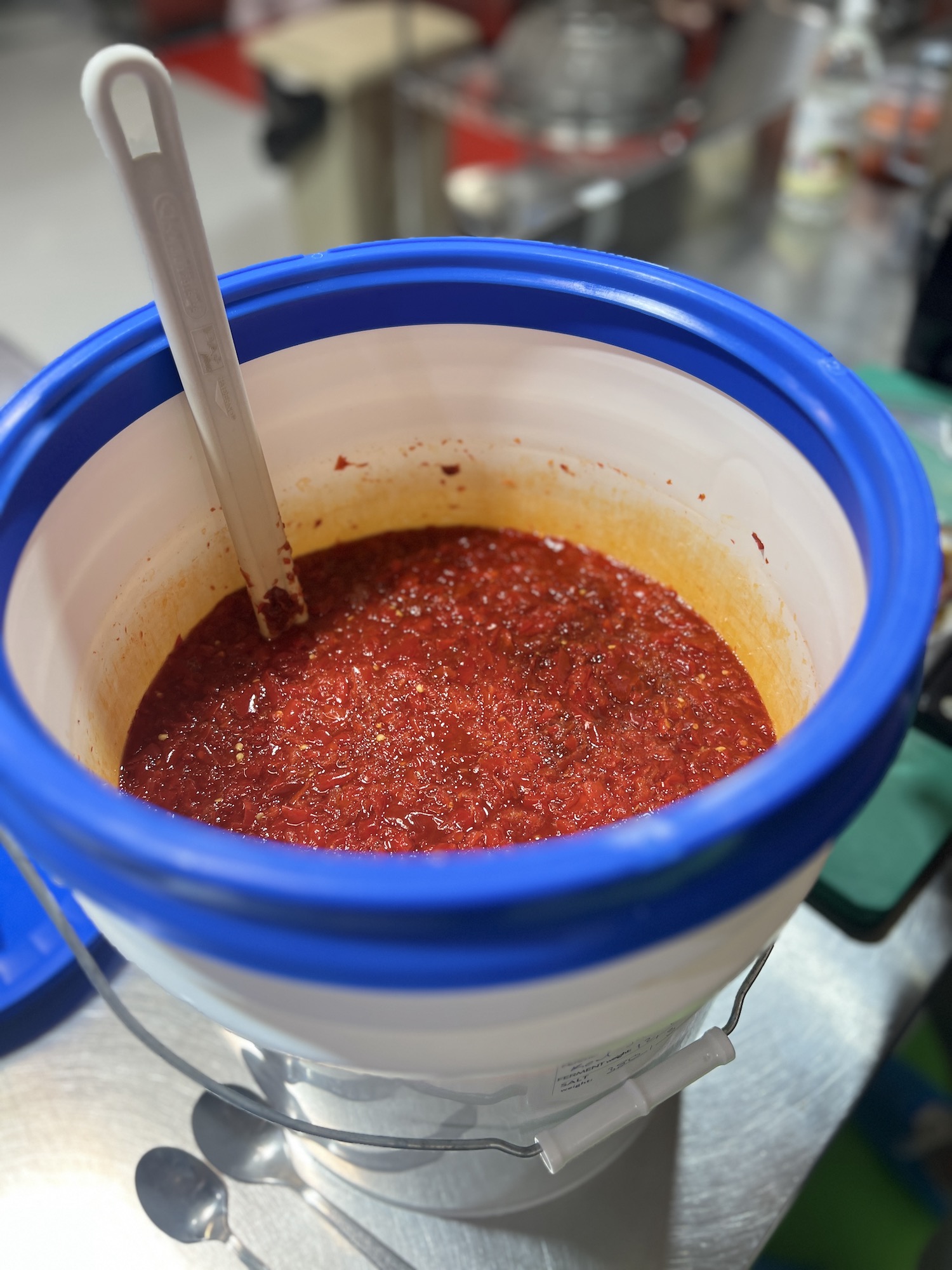
From the first taste, there’s something undeniably special about Camp’s Kitchen hot sauces. They tickle the palate with complex, layered flavors, marrying heat with tang, zest with umami, and all while being healthy. The secret behind this culinary marvel? The ancient practice of fermentation.
In this blog post, we delve into the basics of fermented hot sauce, a process as fascinating as it is flavor-enhancing. We’ll explore why this method is so integral to our production at Camp’s Kitchen and why it makes our hot sauces stand out in a crowded marketplace. Whether you’re a fermentation enthusiast or a curious foodie, this is your chance to gain insight into a process that is equal parts science, art, and tradition. Get ready to discover the transformative power of fermentation and why it’s the heart and soul of our hot sauces.
What is Fermentation?
a) Introduction
Fermentation. A naturally occurring process, has been employed for centuries across cultures as a means of preserving food, enhancing flavors, and introducing beneficial bacteria. But what exactly is fermentation?
b) Types of Fermentation
There are several types of fermentation. But the most common include lactic acid fermentation, alcoholic fermentation, and acetic acid fermentation. Lactic acid fermentation is commonly used in the production of foods like yogurt, kimchi, and, yes, hot sauce! Alcoholic fermentation is the magic behind beer, wine, and spirits, while acetic acid fermentation gives us vinegar. In all types, fermentation is carried out by a specific group of microbes. In the case of lacto fermentation that we employ, that microbe is lactobacillus.
c) How We Ferment
At Camp’s Kitchen, we only use lacto fermentation, a simple process involving salt, vegetables, and sometimes water. The lactobacillus bacteria, which is present naturally on virtually all fruits and vegetables, consume sugars in the peppers, or whatever produce you are fermenting, and create carbon dioxide and lactic acid as byproducts. The increased acidity kills off additional microbes and, the carbon dioxide creates an oxygen-free environment in the fermentation vessel, preventing any surface growth. The salt is added to ensure that our friendly lactobacillus bacteria are able to outcompete any other microbes present at the start of fermentation. Lactobacillus is far more tolerant of a salty environment than other bacteria.
Why We Ferment
a) Introduction
You may wonder why we choose to make fermented hot sauce rather than vinegar based. There are several compelling reasons behind this decision, but the main benefit is the softer flavor of lactic acid vs acetic acid (vinegar).
b) Why Hot Sauce Needs Acidity
Acidity is a key player in the world of hot sauce. It adds a sharpness that balances the heat of the chilies, bringing complexity and depth to the flavors. Most importantly, though, the acidity helps to preserve the sauce and keep you safe from harmful bacteria that can’t proliferate in acidic environments. Fermentation naturally produces this acidity, enhancing the overall flavor profile of the sauce.
c) Why WE Ferment
Here at Camp’s Kitchen, we choose fermentation mainly for flavor-enhancing properties but also for tradition. Fermentation allows us to tap into age-old culinary practices, adding a touch of history and authenticity to every bottle we produce. The 4 weeks or more each batch spends fermenting creates a complexity of flavor not achievable with vinegar-based sauces and, finally, the softer flavor of acetic acid allows the flavor of other ingredients to shine through.
Types of Hot Sauce Categories/Groups
a) Introduction
The world of hot sauce is diverse and exciting, with different styles suited to varying taste preferences and dishes.
b) General Categories
Some popular hot sauce styles include Louisiana style, known for its vinegar-forward profile, and perfect for fried foods and Creole dishes. Tabasco is a classic and well-known example of a Louisiana-style sauce. If you heat some Louisiana-style sauce up and emulsify butter into it, you’ve got yourself Buffalo Sauce. Sriracha, with its iconic sweetness, heat, and garlic notes, is a hit in Asian cuisine. Then we have our very own category – craft hot sauce. Camp’s Kitchen falls into this realm, offering artisan, fermented hot sauces that prioritize flavor nuance and quality ingredients. We don’t really work within a specific style of sauce from a flavor perspective, leaving us free to flex our creativity and try new things. The one thing all our sauces have in common, though is they all start from a base of fermented peppers and are handcrafted.
c) Uses and Pros and Cons (Subjective)
Each style has its unique uses, strengths, and weaknesses. Louisiana-style sauces are versatile and add a tangy heat to dishes, though they may lack the complexity of other styles. Buffalo Sauce famously goes on chicken wings. Sriracha is flavorful but might be too sweet for some palates. This is why our version of, Reap’Racha, has more heat and less sugar than store-bought brands.
The key is in exploration. Don’t be afraid to step outside your comfort zone and try something new. You might just find your new favorite hot sauce among our carefully crafted, fermented offerings.
In conclusion, fermentation is more than a process here at Camp’s Kitchen. It’s an homage to tradition, a nod to health, and our secret to creating a symphony of flavors that dances on the palate. So, the next time you reach for that bottle of Camp’s Kitchen hot sauce, you’ll appreciate the love, care, and science that goes into each drop.



